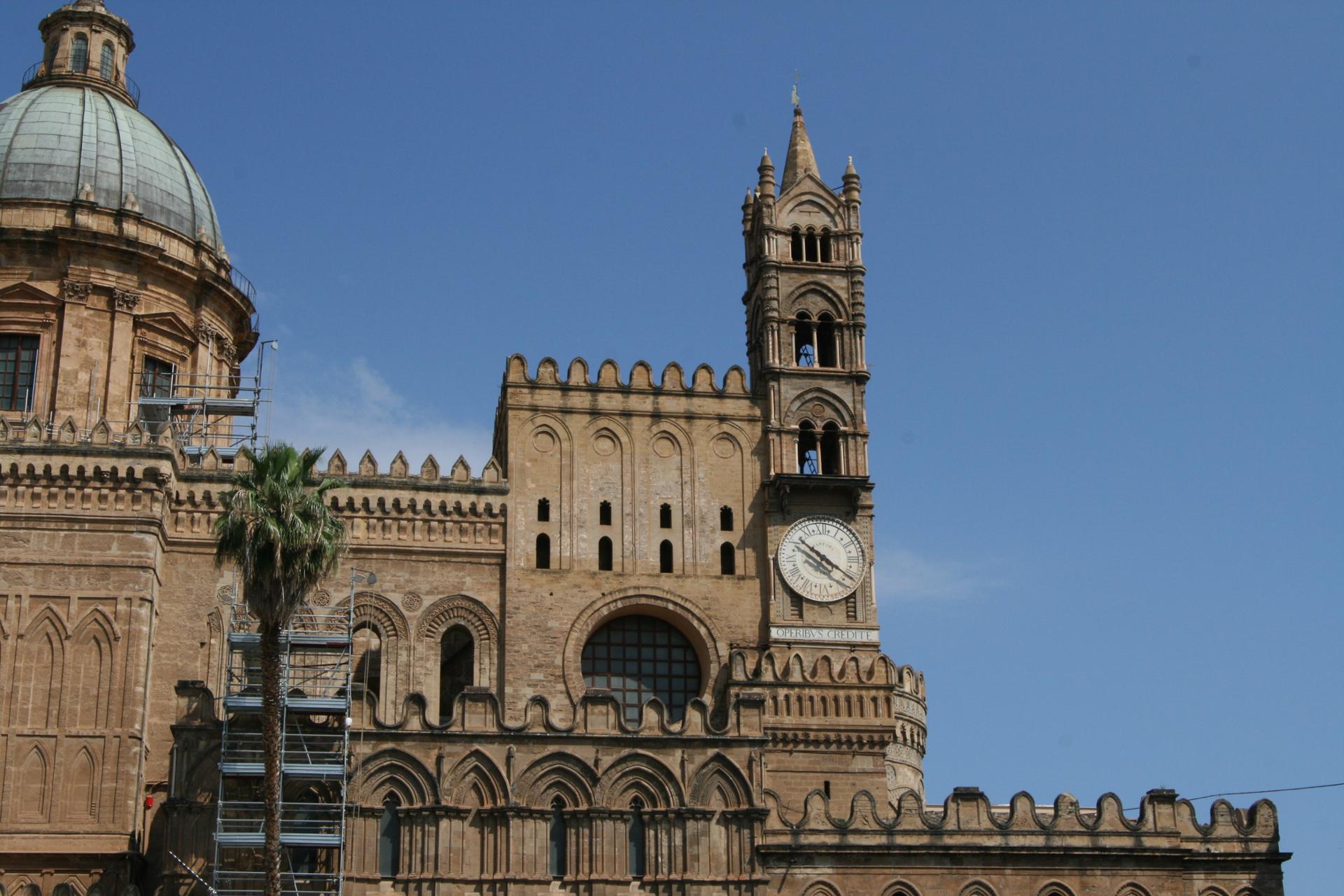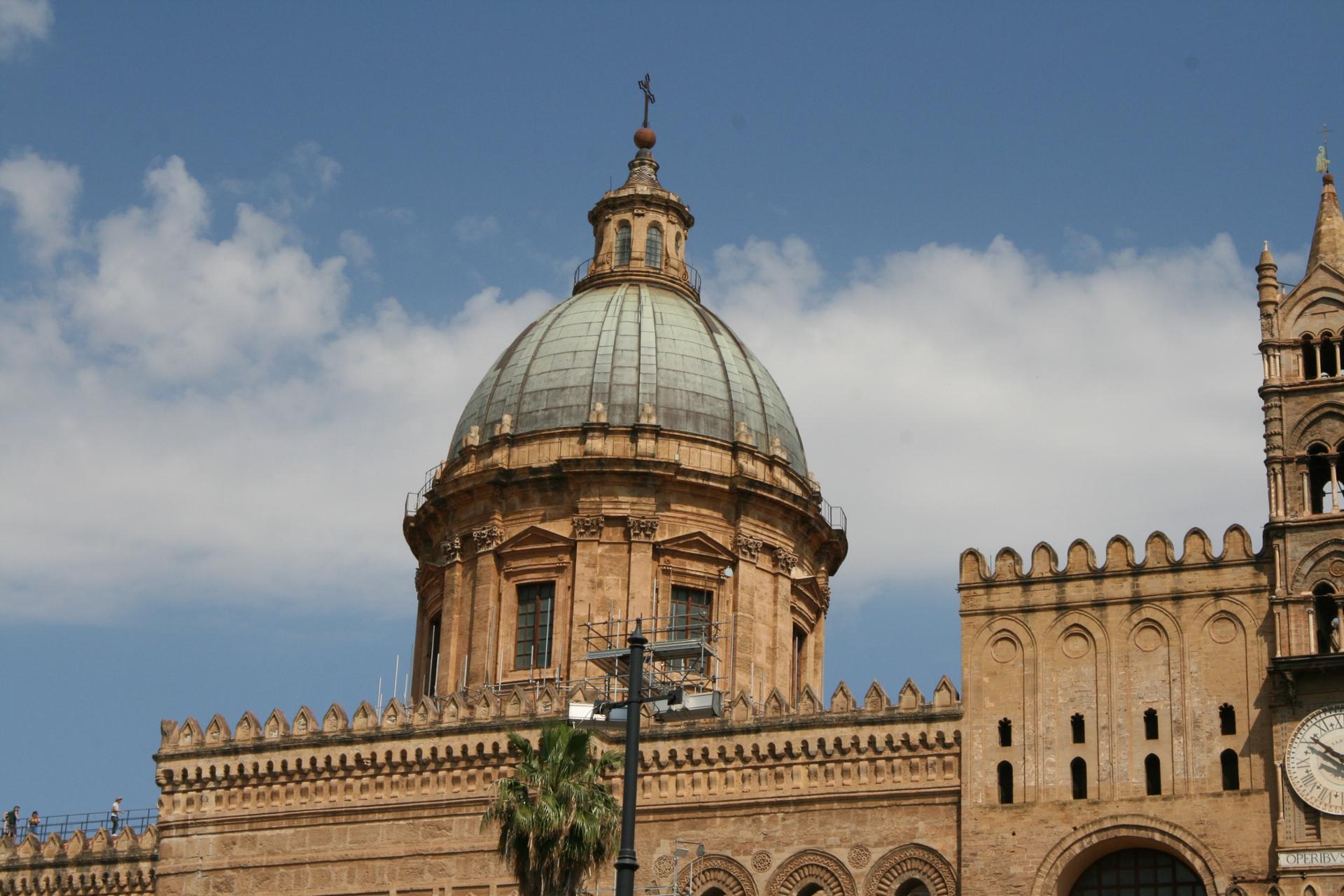Cattedrale Palermo





The Cathedral of Palermo
The cathedral of Palermo is dedicated to the Holy Virgin Mary Assumption into Heaven and is located right in the ancient heart of the city. The cathedral of Palermo has a very interesting history: the construction of the cathedral was commissioned by the English archbishop Walter Off, around 1170. The cathedral of Palermo, from the chronological point of view, was the third of the churches that followed on the same site; initially, in fact, there was a basilica destroyed around the fifth century during the Vandalic persecutions. The building project was very ambitious and precise and the construction of the new cathedral of Palermo required considerable resources.
To date, we can say that it is a truly majestic work, whose original construction Gualteriana developed on a basilican plant divided into three naves and since its origins, the Cathedral of Palermo, had functions of worship and fortress, as well as that of a funeral temple dedicated to the king and his family. The interior of the cathedral underwent profound transformations between the late eighteenth and early nineteenth centuries: it is a Latin cross, with three naves divided by imposing pillars and statues of saints that were part of the decoration of the grandstand of Gagini.
If you have a keen eye, you will surely notice that, in the right aisle, the first and second chapel, they guard the famous imperial and royal tombs of the Normans. It is no coincidence, in fact, that already in 1130, King Roger II, had established that the cathedral of Palermo should be the mausoleum of the royal family. There are other tombs inside the cathedral that are those of Constance of Aragon and that of Albert of Bourbon of Naples and Sicily. The chapel, inside the cathedral of Palermo, houses the tombs of Frederick II’s parents, as well as that of Henry IV and that of Constance of Altavilla. The tomb of Henry IV was made of red porphyry, precious stone and hallmark of the royal tombs.
The one by Costanza d'Altavilla, on the other hand, in red porphyry, is characterized by columns that support a majestic canopy, decorated with geometric mosaics. Also inside the cathedral of Palermo, embedded in the right wall of the chapel, visitors can admire the elegant white marble sarcophagus of Constance of Aragon Roman: there are the remains of the first wife of Frederick II. Moving your attention towards the central nave, on the floor, you will notice a marble sundial with colored inlays representing the constellations, by Giuseppe Piazzi, famous astronomer and discoverer of the supposed planet Ceres.
The sumptuous altar of the Sacrament, in bronze, lapis lazulo and colored marble, made to a design by Cosimo Fanzago, does not go unnoticed either. Inside the cathedral, you can also admire the beautiful wooden choir of the late fifteenth century, which is located in the presbytery. To the right of the presbytery, then, there is the chapel of Santa Rosalia, patron saint of the city of Palermo, with the relics and the silver urn. Also present are the two high reliefs by Valerio Villareale, representing Santa Rosalia invokes Christ for the liberation of the plague and the entrance of the glorious relics of Santa Rosalia in Palermo.
Of great interest, in addition to the wooden choir in Gothic-Catalan style and the marble remains of the Gaginian tribune adapted, are the statue of the Madonna and Child, the precious holy water font and the Madonna della Scala placed on the altar of the new sacristy. If you love art and architecture, surely you will not miss this Sicilian beauty, symbol of the city of Palermo and important place of worship for citizens. What are you waiting for? Go to Sicily and discover one of the greatest Italian heritage.
What to see in Palermo, a city of ancient and exciting history
Palermo is the sparkling capital of beautiful Sicily and is the main urban center of the entire island. Palermo is a very young and avant-garde city; often the alleys are full of young people who have fun and the nightlife is certainly not unknown.
The streets of the city centre are lined with trendy bars, bars and restaurants, where you can drink cocktails and party until the early morning hours. Characteristic of the place is also the street food, perhaps born in Sicily: eat something traditional and fast, walking through the ancient alleys of the center in the company of friends or family.
Palermo is truly an extraordinary city, not only the capital of the island, but a fundamental point of reference for anyone who has the desire to spend a holiday in this area. It would be a shame to spend a few weeks at the beach without passing by Palermo, a city that has a lot to offer in terms of modernity, but also an exciting history behind.
Often, Palermo, is called the capital of Arab-Norman art and is strongly characterized by historic buildings and monuments of historical and artistic importance: walking through the streets of the city, you will feel like entering a world apart. Tour that you can do independently or with a short guided tour.
The city of Palermo was founded by the ancient Phoenicians with the name Zyz and immediately formed an important commercial center and base for Sicily. Later, it was conquered by the Romans who gave it the name of Panormus, but it is only thanks to the Arab domination that the city experienced a period of great growth and flowering: it expanded, new urban districts were born and, in particular, near the outlet to the sea, Kalsa was born, a fortified district and residence of the emir.
All this promotes the spread of the so-called Arab-Norman style; a beautiful mixture of architectural and decorative motifs that strongly characterize the main buildings of the city, including the majestic Cathedral of Palermo. The nineteenth century, then, marks the opening of the city to large businesses and the great commitment of the business bourgeoisie: the city widens its borders, is inaugurated the Avenue of Liberty and the neighborhood around is enriched with art nouveau creations. Today a new impulse to the revaluation, the restoration and the reuse of the sumptuous monuments of the center is trying to awaken this magnificent giant of the East still asleep.
Palermo is a city that presents a multitude of works and monuments to visit all in one go. Its historic center is certainly among the largest in Europe: churches, palaces, statues and other evocative works are worth a visit by those who are about to discover the city. These historical pieces, including the charming Cathedral of Palermo, are able to tell the true essence of the city itself and to taste the history and tradition of the ancient Sicilian capital. Palermo is one of those cities that the more you discover it and the more you fall in love deeply, leaving an indelible memory in your heart.
In particular, in the famous and historic district of Vucciria, you can smell a unique world of scents and flavors typical of the Sicily region, which are mixed with the joy of the locals. If you have in mind to spend a holiday in Palermo, you should organize yourself very well, as, contrary to what many think, it is a really large city, sometimes dispersed, which offers a lot to visit its tourists. It is therefore important to choose the right time of year, collect in advance all the necessary information to know where to stay, avoiding some unpleasant episode and, last but not least, reach Sicily without an excessive outlay of money.










esempi di as xml: xml serveResource con templateId (chiave)
esempi di as json: json serveResource con templateId (chiave)
esempi di as json e siteId: json serveResource con siteid




